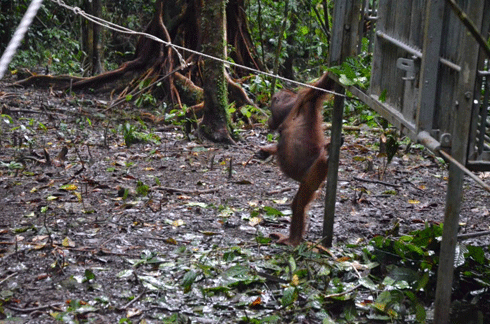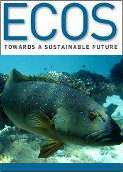
|
Published: 25 June 2012
Orangutans graduate from school into the wild
Two endangered orangutans released into a protected reserve in Borneo are the first rehabilitated orangutans ever to be released into the wild.
The orangutans are graduates of an ‘Orangutan Forest School’ in Kalimantan, Borneo, where orphaned, rescued orangutans are reared by humans and systematically taught the life skills necessary to be self-sufficient in the wild.
The school is run by Borneo Orangutan Survival (BOS) Australia, in conjunction with sister organisations and with the assistance of the Indonesian Ministry of Forestry.
The two orangutans, named Berlian and Hamsa by BOS, have been released into Borneo’s protected Kehje Sewen forest, where their progress will be closely monitored. The release was made possible thanks to the purchase of a 100,000 hectare piece of land in the Kehje Sewen Forest, donated by Australian John Cochrane, which will eventually become home to another 200 orangutans, currently working their way through the various stages of the ‘forest school’.
‘As young orangutans traditionally spend an average of eight years with their mothers learning the life-skills necessary to be self-sufficient, this world-first release proved to be an emotional event for the animal welfare workers who have supported each student through four to six years of “orangutan school”, says BOS President Tony Gilding.
‘Orangutan babies experience trauma in much the same way as a human child would, so by pairing babies with a surrogate human mother, we are able to give young orangutans the love and care they need to soften the very real psychological trauma they have experienced at capture, often having witnessed their mothers being killed,’ says Mr Gilding.
Sharing 98 per cent of human DNA, orangutans are highly intelligent animals with the ability to think and reason. According to the UN’s Environmental Program (UNEP), wild orangutans are at threat of extinction within this decade if the trend in deforestation for logging, mining, settlements, palm oil plantations and cash crops continues.
Most of Borneo’s lowland rainforest, the world’s last remaining orangutan habitat, has already been destroyed. Adult orangutans are also shot or clubbed to death by poachers trading in baby orangutans for the illicit pet trade or the entertainment industry.
BOS Australia helps to operate rehabilitation centres and sanctuaries for orangutans across Indonesian Borneo.
Having been taught skills such as climbing, nest-building, sourcing food and identifying threats, the two new graduates are now being monitored discretely. Their physical wellbeing will be checked rigorously for the first year and then intermittently for a second year. The orangutans have radio transmitters embedded under the skin at the back of the neck, to enable the guardians to find them again if they lose track of them at any time. If their chances of survival seem low, aid will be given. Should it prove necessary, supplementary feed will be provided and medical help given.
‘As this is the first systematic attempt at rehabilitating Borneo’s orangutans, we are really putting to the test the idea that humans can enable orangutans to learn to survive in the wild,’ says Louise Grossfeldt, BOS Australia Vice President and senior supervisor of the primate unit at Sydney’s Taronga Zoo.
‘As the threat to the orangutans continues, we need NGOs, government institutions and the private sector to act together to find and allocate other suitable and secure release areas for orangutans and, of course, ensure a sustainable future for their habitat,’ says Mr Gilding.
More information
Watch a video of the release made by Borneo Orangutan Survival Australia
Borneo Orangutan Survival Australia




